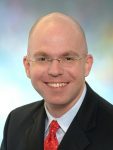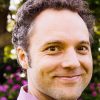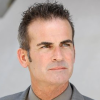A promising field called regenerative medicine accelerates healing in a clinically relevant way and restores structure and function of damaged tissues and organs. The goal is to find a way to restore the structure and function of tissues and organs that have undergone trauma or disease processes, such as body disfigurement from accidents and cancer. The ultimate hope is to replace allogeneic organ transplantation with strategic self-cell replacement using autologous stem cells.
Regenerative medicine holds the promise of improving quality of life for patients all over the world, with scientists utilizing powerful technology to create new body parts from a patient’s own cells and tissues, and eliminating tissue rejection. The field consists of four key areas: Medical devices and artificial organs; tissue engineering and biomaterials; cellular therapies; and clinical translation—“research that leads to better understanding of disease, and/or development of new diagnostic tests or treatments”, according to the Walter + Eliza Hall Institute of Medical Research.
Treating Wounds and Burns
Regenerative medicine using autologous stem cells has the potential to effectively treat acute and chronic wounds associated with burns and diabetes, which are a prevalent and costly problem in the United States, heal wounds and prevent serious complications, such as infection and amputation.
Regenerative medicine is a logical approach to wound healing because of the accessibility and structure of skin, the paucity of success using bone marrow-derived stem cells, the regenerative nature of healing, dearth of good limb salvage treatments and the current application of cell therapies. As a result, additional research is critical to inform regenerative strategies and usher in the development of innovative and viable methods.
How Regeneration Works
Regeneration restores missing tissue. In wound healing, keep in mind that repair leads to a nonfunctional scar, while regeneration leads to tissue that is similar to its original form and function.
Regenerative medicine may include tissue repair and/or enhancement, the development of “new” tissue and techniques, such as stem cells, molecular medicines, genetic manipulations, tissue-engineered constructs and nanotechnology. Partial regeneration restores some, but not all, of the missing tissue.
As a multidisciplinary field, regenerative medicine encompasses surgery, organ transplantation, biomaterials science, engineering, developmental biology and stem cell biology, with a scope that includes technologies that induce the body to redevelop missing tissue and engineer tissue or organs that replace missing structures.
Collaboration: Critical for Scientific Advances
The expansion of scientific discovery and improvements in clinical results will require not only investment, but also consensus and collaboration among leading organizations across every area of regenerative medicine.
Regenerative technologies developed in one therapeutic area could be applicable in other areas to uncover the full range of regenerative medicine benefits. Research collaborations are focusing on much-needed research in regenerative medicine and chronic diseases to innovate methods for reducing complications from burn wounds and diabetic foot ulcers across large populations.
Such collaborations hold great promise for developing breakthroughs in biomedical technologies. For instance, an ultra-gently spray of stem cells could present a special opportunity for investigations and applications in a wide range of regenerative therapies to improve the quality, efficiency and effectiveness of patient care by not only developing new treatment methods, but also by making thoughtful and systematic changes to healthcare and health systems.
Growing Need for Research Support
A push to adapt new strategies based upon sound scientific evidence should support the continuation of scientific and medical work, providing needed infrastructure—such as lab certification, advanced technology and equipment, and clinical and administrative staff to support research initiatives.
Regenerative strategies have the potential to transform our approach to disease, but developments toward regenerative medicine in wound healing must be explored more fully to identity the challenges and opportunities facing this exciting field and to prepare and incorporate new advances. In 2014 the Japanese government spurred the rapid advancement and translation of basic research in regenerative medicine to medical treatments with the Regenerative Medicine Promotion Act, leading to the availability of many new commercially viable stem cell therapies in Japan.
Other challenges include the basic understanding of which type and source of stem cells work best to heal or restore damaged tissues and organs. What’s more, the regulatory pathway for approval of regenerative medicines needs to keep pace with basic and applied stem cell discoveries. Finally, the reimbursement of medical costs associated with regenerative medicine treatments by governments and third-party payers must be clarified and in step with the oncoming wave of regenerative medicine regulatory approvals.
These high-level initiatives require federal grants, philanthropic donations and academic partners to aid in the significant advances in regenerative medicine. Research collaborations in this area represent the first phase toward developing meaningful and quality therapeutic treatments that will benefit patients in the United States and around the globe.






